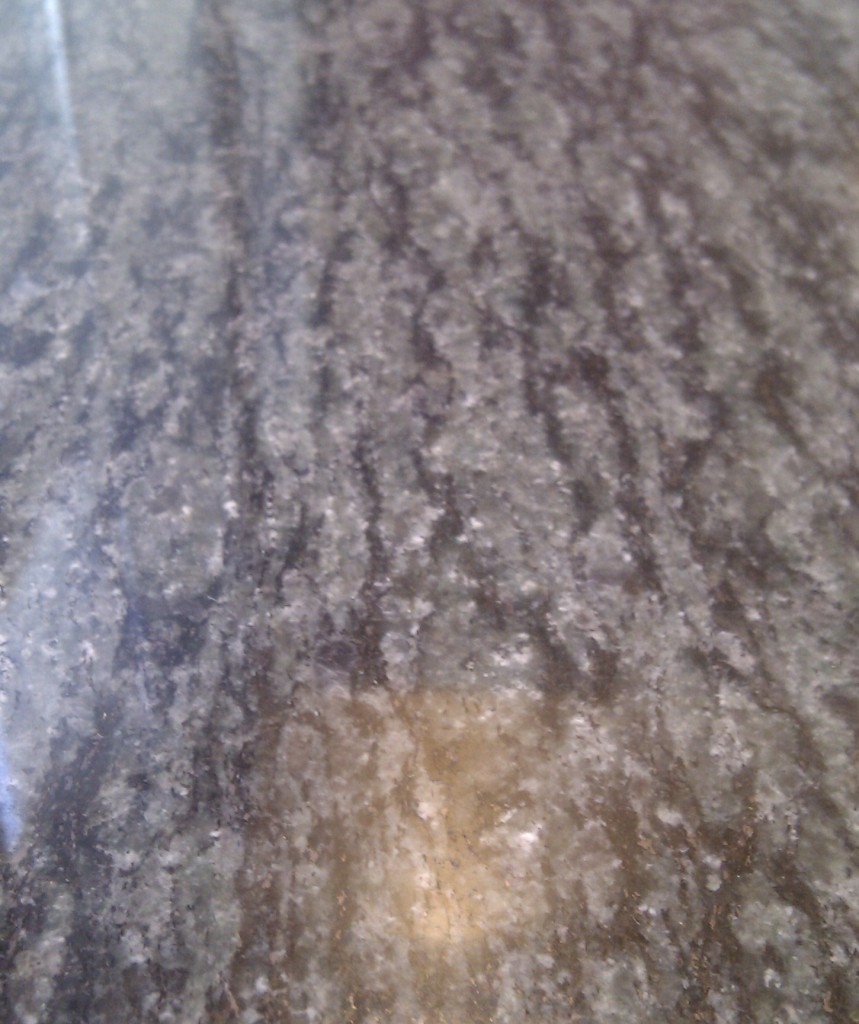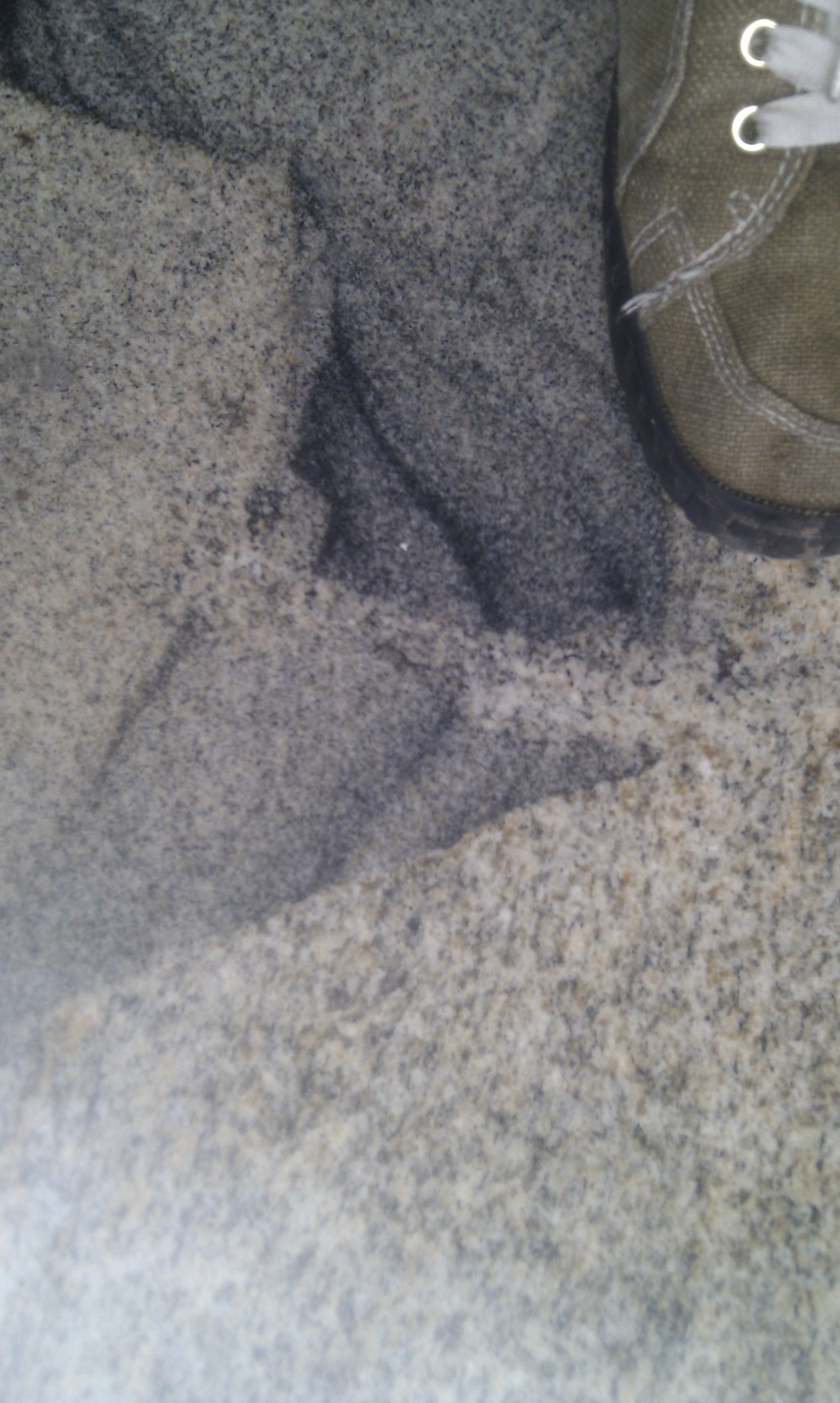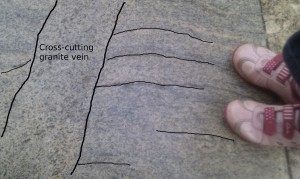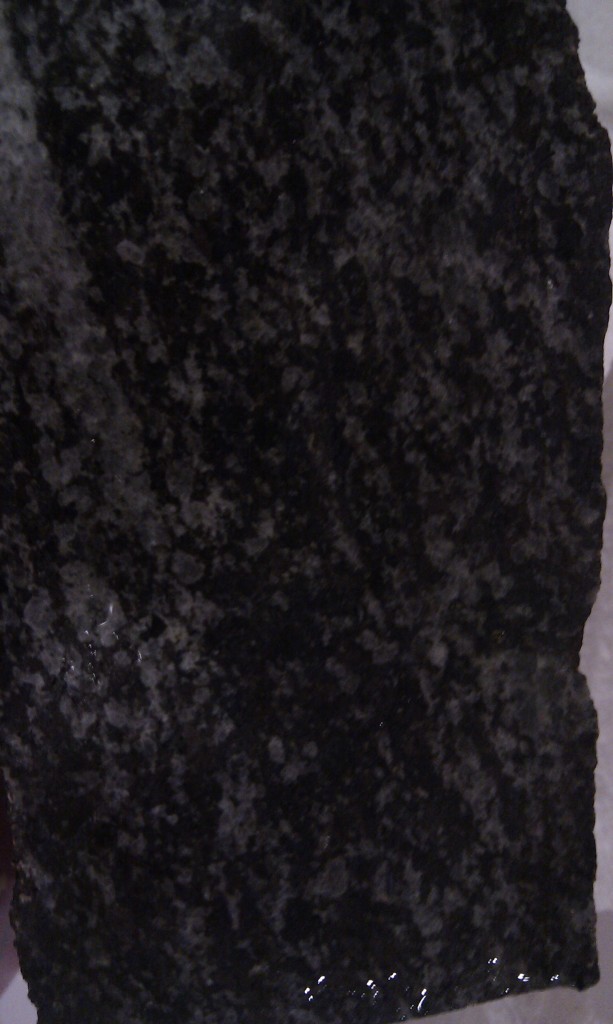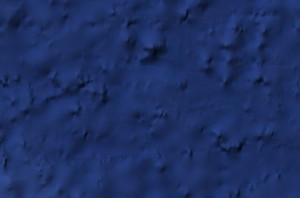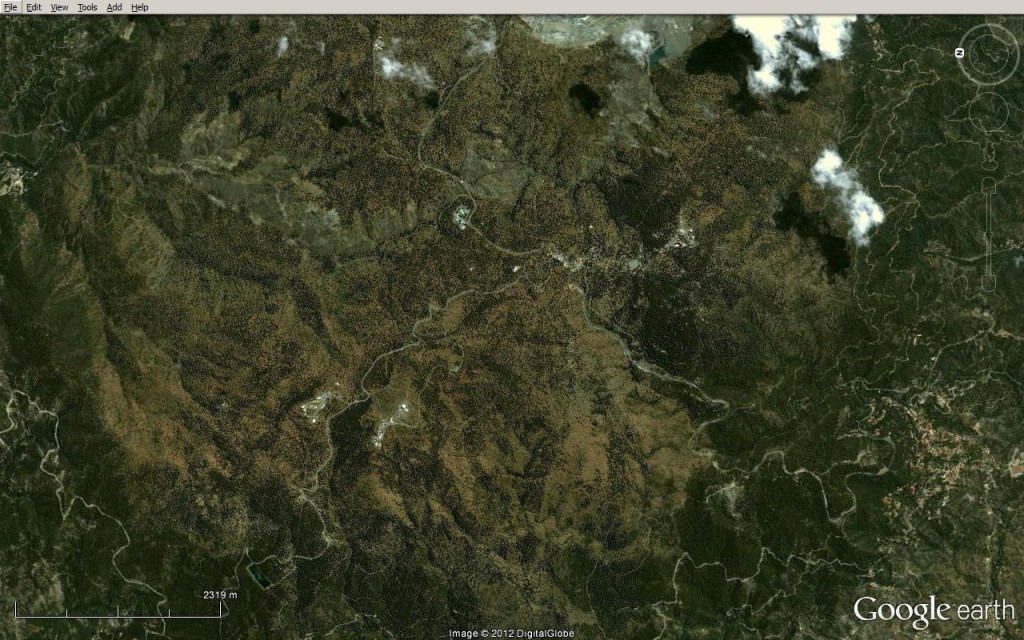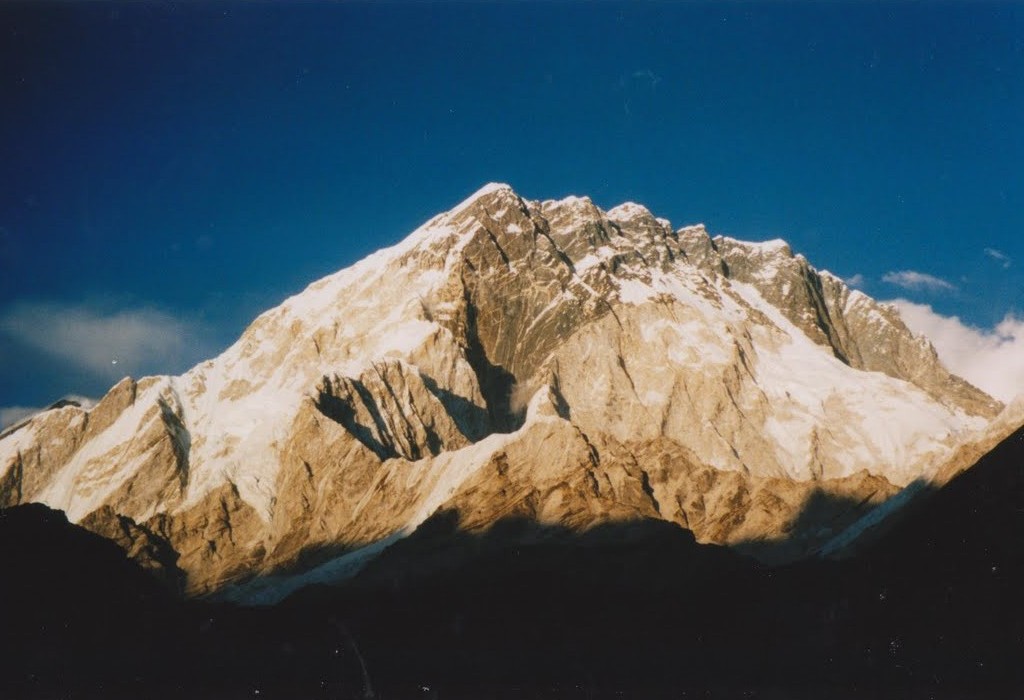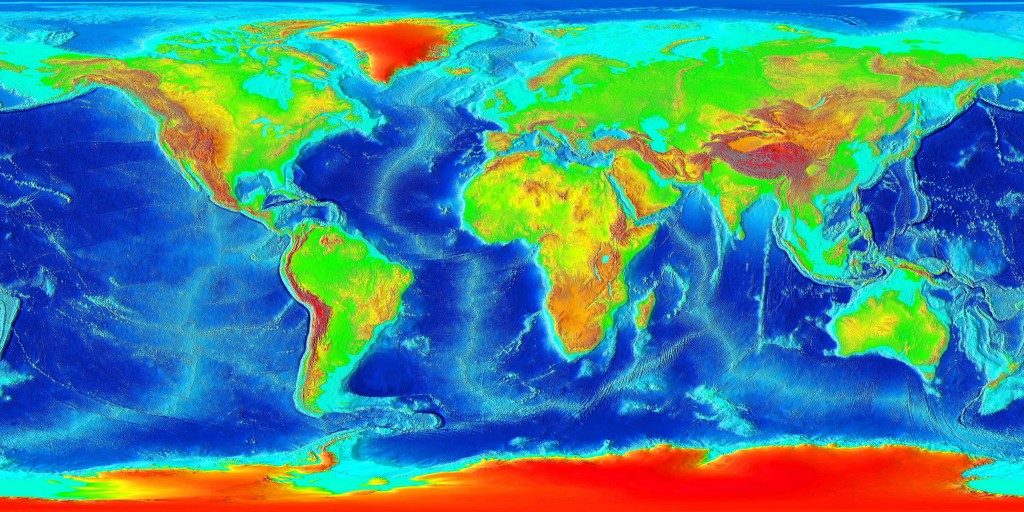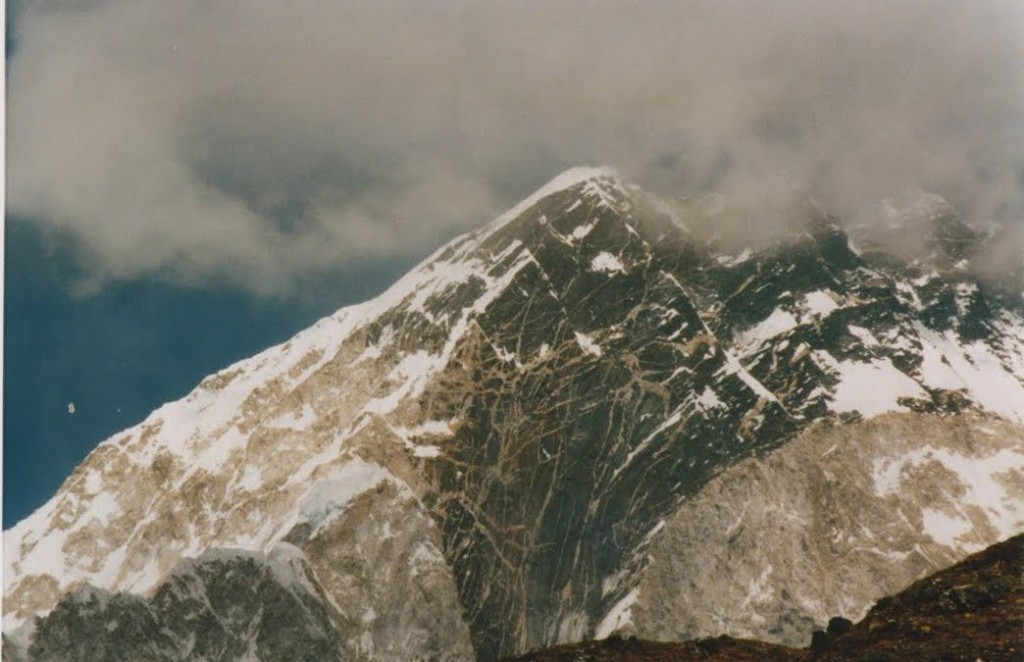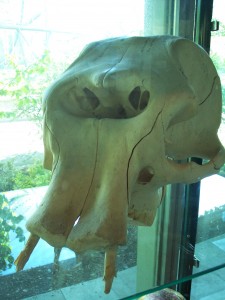I have a busy suburban lifestyle which rather restricts opportunities for fieldwork. Consequently I make the most of the few opportunities that do arise. These might be a glacial erratic in a park or turbidites in the toilets but here it’s granites in shopping centres. These are found sometimes on counter-tops, but often as flags on the floor. So, if you’ve seen someone apparently furtively taking pictures of his shoes, while his children try to pull him into a shop, that would have been me.
Here’s a nice piece of granite (a good place to sit and eat sticky buns), green shoe for scale: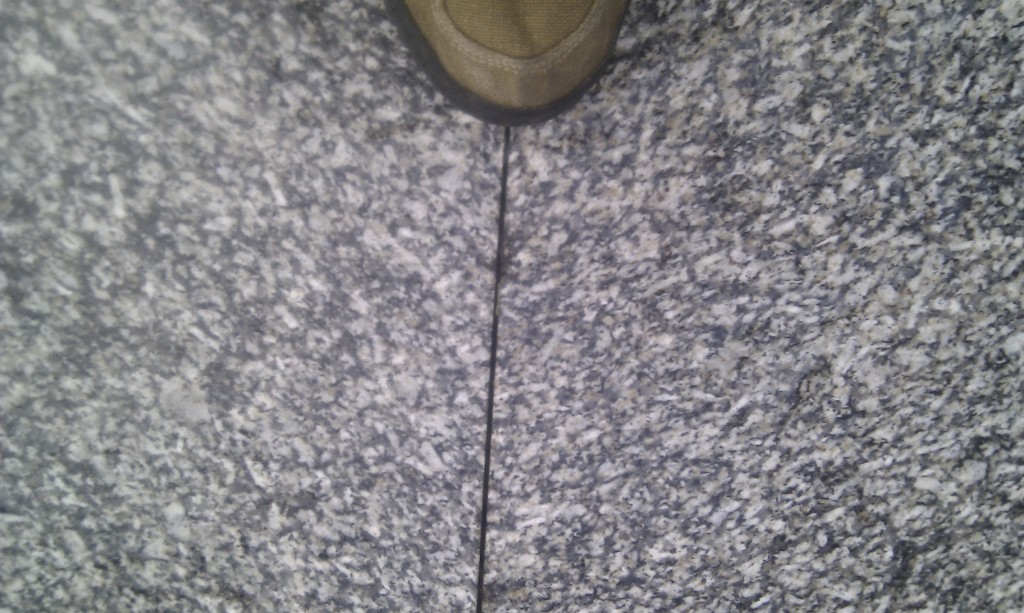
By granite, I mean granitoid or granite ‘sensu lato’ (e.g. in the loose sense). The term granite ‘sensu stricto’ is tightly constrained in terms of proportions of feldspar, quartz and so on. I’m not an igneous petrologist and when I look at ‘granites’ I don’t worry about the composition of the feldspars, I work out whether they are aligned randomly or not. Look through the eyes of a structural geologist and you see fabrics. In these blocks there is a planar fabric, largely defined by the alignment of the feldspar laths. Like so:
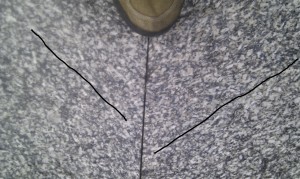 So this is a deformed granite, so we should call it a meta-granite? Not necessarily. It turns out that fabrics can form in granites as they cool.
So this is a deformed granite, so we should call it a meta-granite? Not necessarily. It turns out that fabrics can form in granites as they cool.
Normally in deformed rocks, fabrics are formed by the deformation of the actual minerals. In intensely deformed rocks such as mylonites, the individual minerals have had their shapes dramatically changed.
Here’s a counter-top example of an igneous rock that has deformed after cooling:
Note how the original igneous minerals have all been deformed and/or recrystallised. The fabric was caused by crystal-plastic deformation. The rock was deformed after it crystallised.
In my original example, the fabric was defined by the alignment of laths of plagioclase, but these feldspar grains were themselves undeformed. It turns out that fabrics like this form in granites while they are still molten. If you put stress on a cooling magma (which is a mix of molten rock and freshly crystallised minerals) you can deform it and so align the minerals.
Also, if the magma is compositionally inhomogenous it will end up as a granite with patches of different colour. If it has been deformed, you will end up with flattened patches, which themselves form a visible fabric in the rocks.
Time for some examples, from a set of slabs that cover huge areas of my local shopping centre. Here’s my favourite:
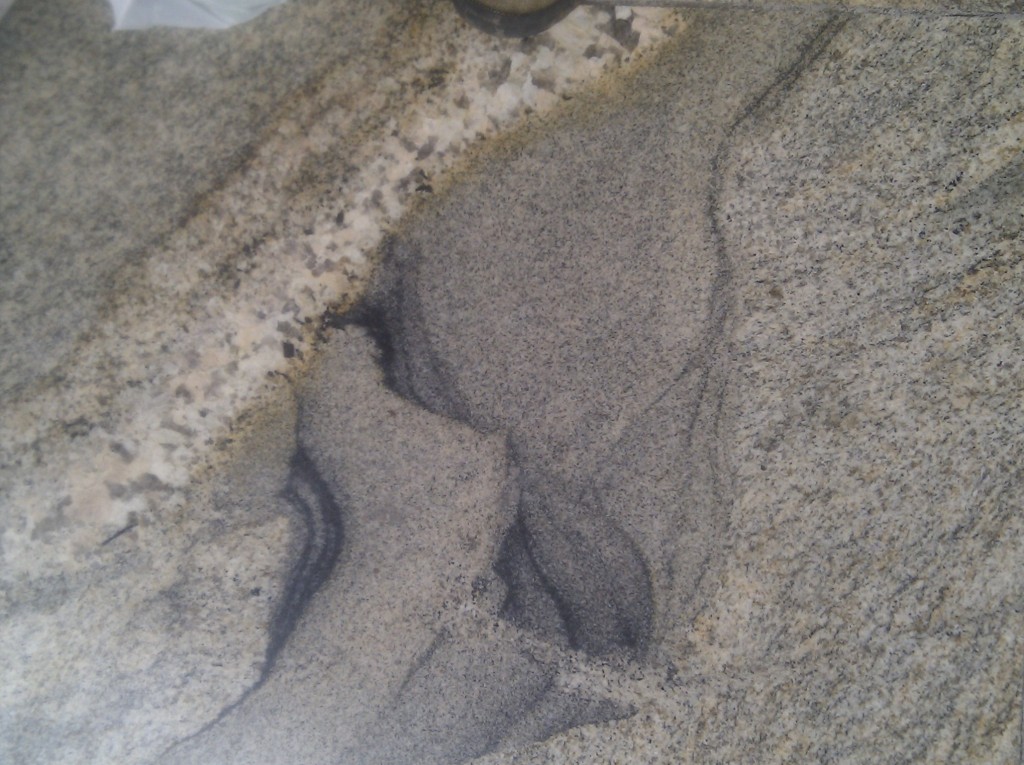
There’s a lot going on there, so I’ll put on my annotating hat.
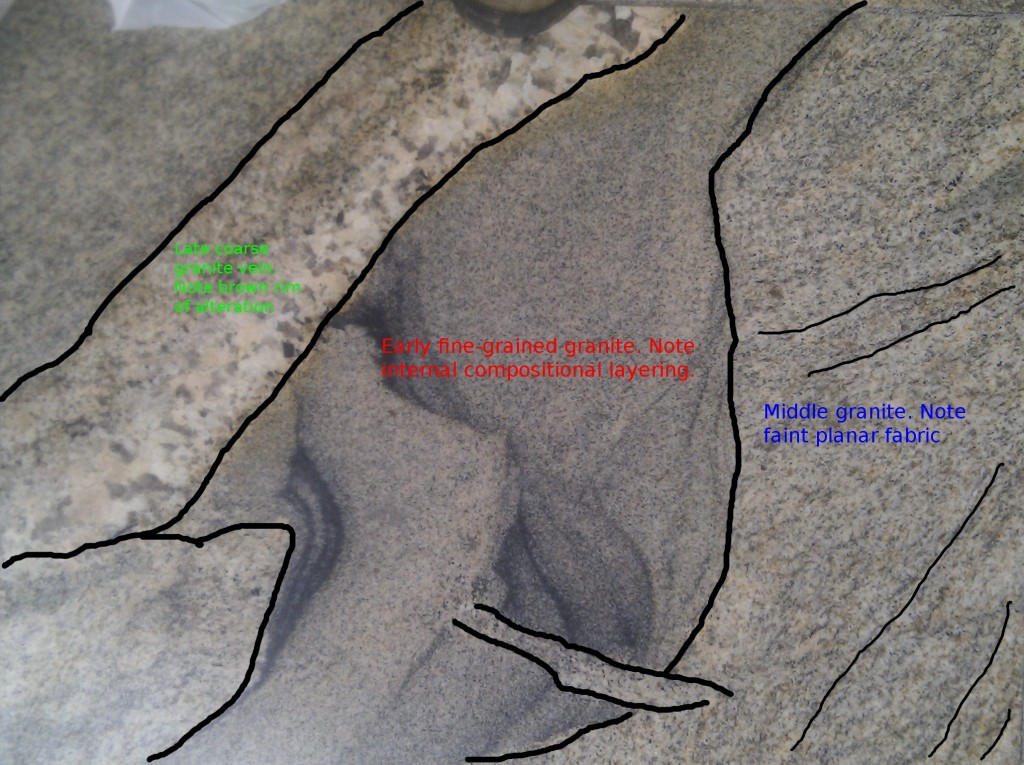 Talking through in sequence, we start with a fine grained granite (area with red text). This contains compositional layering that is a little bit folded. Next we have an area (blue text) of more homogeneous slightly coarser granite. It looks like the early ‘red’ block has sharp edges and so was mostly solid when the ‘blue’ magma arrived on the scene. The blue area has a faint fabric to it. Finally we have a ‘late’ granite vein (green text) that crosses everything. This probably is late in the granite’s history as its coarser grain size and the zone of alteration around suggest it was rich in fluids and so some of the magma that cooled last.
Talking through in sequence, we start with a fine grained granite (area with red text). This contains compositional layering that is a little bit folded. Next we have an area (blue text) of more homogeneous slightly coarser granite. It looks like the early ‘red’ block has sharp edges and so was mostly solid when the ‘blue’ magma arrived on the scene. The blue area has a faint fabric to it. Finally we have a ‘late’ granite vein (green text) that crosses everything. This probably is late in the granite’s history as its coarser grain size and the zone of alteration around suggest it was rich in fluids and so some of the magma that cooled last.
The ‘blue’ granite is the only area showing a fabric. This is a neat proof that this fabric was caused by deformation of the magma, not solid rock. The fabric was formed after the early ‘red’ block was solid and before the late ‘green’ granite was intruded. It therefore must be syn-magmatic and as such is an insight into what goes on it cooling magma chambers.
Here’s a close up of the most interesting area. Note the sharp edge between ‘blue’ and ‘red’.
Here’s an intriguing one:
A bit of annotation to bring out some interesting features:
Note another coarse cross-cutting vein, in an area with a clear fabric. What is intriguing is the way the fabric appears to swing into the vein, with a consistent sense of shear. What *might* be going on here is that there was a shear-zone cutting the fabrics, which the vein subsequently is intruded into.
What causes the fabrics then? It is very likely, for the examples shown, that the fabrics are caused by normal processes associated with granite intrusion. Intrusions of new magma, changes in volume on cooling or other processes can cause movements that explain these weak fabrics.
What if granite is intruded into crust that is being deformed? If the country rocks are being flattened or sheared, what effect does this have on the cooling intrusion? Its now recognised that many granites are syn-tectonic and that they contain magmatic fabrics that ultimately are caused by deformation of the surrounding rocks. More than that, there are classic areas, such as Donegal in Ireland, where it is clear that the granite was intruded into a deforming shear-zone. This is a whole new take on the classic ‘space problem’ for granites. One answer to the question of how you make space for granite magmas to fill is that shear-zones are involved. Much of the evidence for this is found in fabrics like the ones I’ve shown you.
My PhD was based around a set of syn-tectonic mafic intrusions. These had magmatic fabrics too, only in gabbro rather than granite. In this case I demonstrated a link between the fabrics in the intrusion and the fact it was actively being deformed while cooling. I’ve never seen gabbro fabrics in a counter-top though, more’s the pity.
This story is my contribution to the Accretionary Wedge #42.

